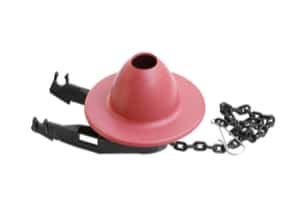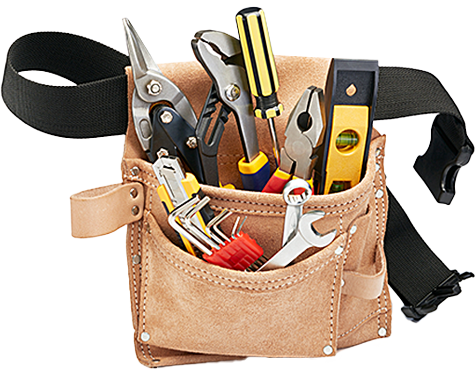No, it’s not just you: your toilet really is flushing slower than it used to. Yes, it is affecting how effective the toilet is. A Slow flushing toilet can’t flush nearly as effectively. Eventually, that slow-down will turn into a clog–or something worse.
Luckily, it doesn’t have to. There are many reasons – simple and complex – why toilet flushes slow down. If you can diagnose why your toilet is flushing slow, you can probably fix it. We’ll cover the four most common reasons and tell you how to fix a slow flushing toilet.
1. Not enough water in the tank.

When you flush your toilet, you’re letting water from the toilet tank rapidly flow into the toilet bowl. Introducing all that water suddenly creates the downward suction of the flush. If there isn’t enough water in the tank, then it won’t create enough suction in the bowl which results in a toilet with a weak flush.
You want your tank to fill with water up to about half an inch below the drainpipe. If the tank isn’t filling up enough, then your flush will be too weak. A couple of different things could impede water flow into your water tank. You could have low water pressure, improperly adjusted fill valves, or a malfunctioning trip assembly. Each of these problems are easy for your local plumber to fix.
2. Mineral build-up around toilet jet holes.
The jet holes are the holes on the underside of your toilet’s rim. Water shoots out of the jet holes during a flush. Toilet jet holes are small and out-of-sight, which means they tend to be easy to forget about. They’re also easy to forget to clean. If you don’t clean your toilets’ jet holes frequently enough, minerals can build-up in and around them. Over time, these mineral build-ups could block water flow. If your toilet is slow but not clogged, this could be the problem.
Use distilled white vinegar and a small stiff bristle toilet brush to break up the buildup around jet holes. First, spray the build-up with the white vinegar. Let the vinegar sit for thirty minutes. Then, use the brush to scrub the build-up away. Make sure to wear gloves while you do this!
3. Worn or faulty flapper valve.

The flapper valve is the rubber stopper located at the bottom of the toilet tank. It covers the passage that leads the toilet bowl. When you depress the toilet handle, you’re lifting the flapper and uncovering this passage. Water flows from the tank to the bowl through the passage you’ve just uncovered, triggering the flush.
Flapper valves wear out over time. If the flapper wears out, it may not be able to properly cover the passage between the tank and bowl. You hear this in a toilet that is constantly “running.” The water leaks from the tank to the bowl constantly, which weakens the flush. It’s relatively easy to replace a flapper yourself, or you could have your plumber do it.
4. Clogged drains.
Clogged drains affect all the water-using appliances in your home, including your toilet. A backup in any pipe or drain will slow the movement of water throughout your home. Even partial clogs can impact your toilet’s ability to flush. The easiest way to fix this (and avoid it long term) is to invest in regular professional drain cleaning.
Clogged drains often happen when someone accidentally flushes something down a drain that they shouldn’t. Pay close attention to what you’re flushing down your drains. Don’t treat your drains like a garbage can–especially your toilets.
Toilet Repair in Dallas and Beyond
If your toilet is not flushing all the way or even not flushing, give Benjamin Franklin Plumbing a call. We’ll get everything flowing the way it should and close the lid on all your bathroom plumbing problems for good!




